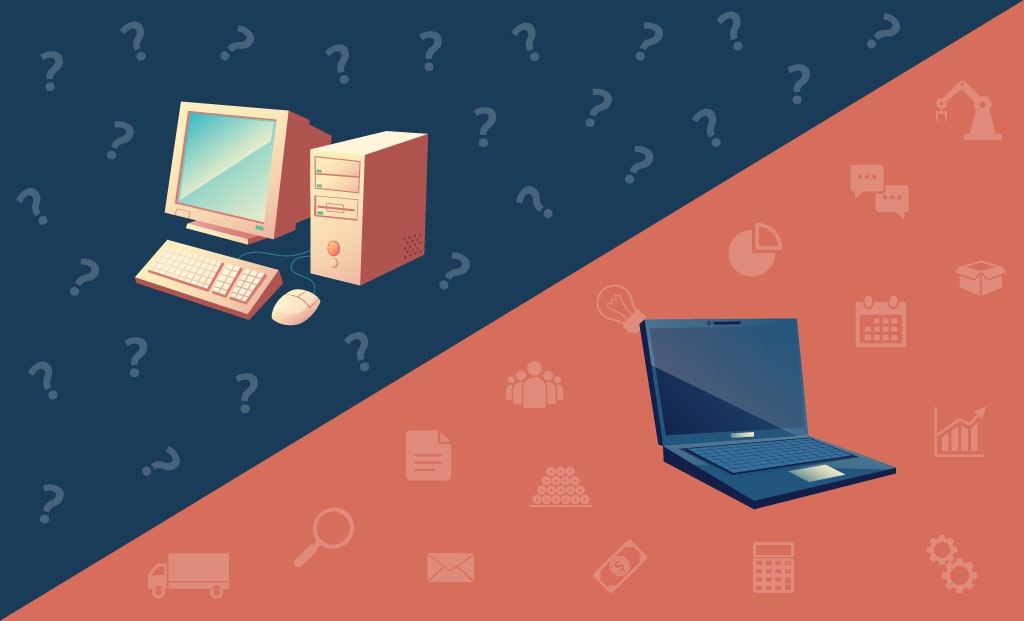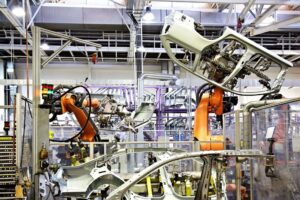In today’s age where the face of technology changes every single day, manufacturers have realized that harnessing data and business intelligence will help them tackle increasing market volatility and sustain over their competitors. To do this, they would need an enterprise solution that rides on new technology, meets almost all their requirements, helps them grow and scale up as they grow. Many manufacturers are able to adopt advanced technology such as modern ERP systems and associated production technology to bring business agility and much-needed efficiency.
However, many manufacturers are still stuck with older, legacy ERP systems that holds them back from the rest.
Understanding Legacy ERP systems?
Legacy ERP systems evolved from Material Requirement Planning (MRP) systems and came into presence in the 80s and 90s. Their ability to cater to various manufacturing functionalities such as inventory, finance & accounting, scheduling, production management, business planning etc. made them an instant choice by manufacturers. These systems were built using proprietary or legacy programming and had to be installed on premises of a manufacturing site. To an extent, legacy ERPs enabled manufacturers to control and manage their operations. If a manufacturer wanted multi-site capabilities, then the same ERP’s instance had to be installed on the other sites and connected to each other using networking capabilities. For third-party functionalities and additional capabilities, they had to be additionally programmed and integrated with the ERP.
As time passed and businesses grew, legacy ERP systems were burdened with more functionalities and capabilities. This either led to repeated slowdowns, silo-based structure that disconnected each department/branch from each other. Business Intelligence was a distant dream due to data sets being different and disconnected from each other. To conduct in-depth analysis, personnel had to manually extract data and run analysis on it which was time consuming.
Data incompatibility between the ERP and third-party systems increased dependence on the IT team, reduced operational efficiency, disrupted production, increased wastage of time, labor and materials and increased costs.
Comparing Legacy ERP with Modern ERP systems
Modern ERP systems achieve what legacy ERP systems cannot i.e. centralization of data and communication in addition to thorough integration of all manufacturing modules. Let us compare how modern ERP systems outdo their predecessors in terms of features and performance.
| Modern ERP | Legacy ERP |
| Based on new programming technologies such as Java, HTML, Bootstrap, Angular JS etc. | Based on legacy and proprietary programming technologies that have become obsolete. |
| Can be installed on-premise or on private or public cloud servers. | Needs to be installed on-premises only. |
| Option to access ERP via browsers from anywhere via any handheld device (smartphones, tablets etc.) | Option to access ERP only through desktops and LAN connection. |
| Implementation isn’t time consuming due to all modules connected to the centralized database. Design is pre-built and installation is a breeze. | ERP Implementation takes a great deal of time due to manual installation on each workplace, integration with other software, and module integration (inventory, accounting, manufacturing etc.) |
| Can be easily integrated with a wide range of manufacturing technologies such as bar-code reading & printing, Nesting, CAD/CAM design, shipping and logistics, analytics, machine monitoring, RFID, EDI etc. | The integration capabilities are limited to a few functionalities due to higher time and costs required to integrate with third party and internal tools. |
| Can be upgraded easily as they are based on new technology and hosted on cloud servers. | Upgrade consumes lot of time and resources as each upgrade has to be manually conducted on every instance and machine. |
| Data can be accessed and updated in real-time from anywhere, anytime from any device and browser. | No real-time data updates. Data has to be extracted, manually worked on using spreadsheets and shared to stakeholders. |
| Equipped with advanced analytical dashboards and business intelligence reports, thereby providing real-time data to personnel across departments and levels. | Equipped with basic data and reports. |
| Can be customized without much coding. | Needs extensive coding to customize. |
| Seamless and real-time communication with suppliers, traders, third party vendors and customers. Information access through portals designed for each stakeholder. | Communication only via emails to stakeholders. |
| Doesn’t need a big IT team to manage the ERP. Support and maintenance costs are low. | Needs a fleet of IT resources to manage the ERP, report customizations, software issues, hardware issues etc. Support and maintenance costs are high. |
| Cost effective and more return on investment. | Not cost effective and slows down the growth of the manufacturing enterprise. |
| Can be scaled to any level irrespective of number of branches, manufacturing units, departments etc. in less time, costs and efforts. | Scaling up is difficult as it will involve a lot of manpower, man hours, time, costs and efforts. |
Modern ERP systems have a seamless workflow structure in-built into it that automates manufacturing workflows and business processes right from the word go. Request for Quotations (RFQs) are immediately responded with accurate quotes that can be generated quickly using ready-to-consume data. Sales leads are stored in a central repository (CRM) and history tracked for quick conversions to sales orders. Sales information is visible to all relevant departments and Work Orders are generated and added to the job schedule in real-time. Manufacturers have ready access to inventory levels and its movement across the enterprise (through bar code technology) helping them to take critical procurement and job planning decisions. Suppliers have access to inventory levels enabling them to dispatch materials before the alert is due. Shop floor personnel have instant access to machine performance, manpower availability, and material utilization. Shipments are tracked till it reaches its destination. Customers have instant access to their orders, service requests, invoices, quality data etc. thereby making customer service a breeze.
Overall, the operating speed of a manufacturing enterprise speeds up when they use a modern ERP as compared to a Legacy ERP. In an age where each customer differs from the other, manufacturers are able to mold their business processes as per each request and deliver customized solutions. Overhead costs reduce, operation efficiency increases enabling manufacturers to scale up and achieve expected growth.
Of course, the Modern ERP Wins!






One Response
Just exploring your services